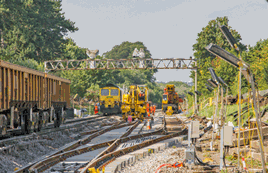 Read the peer reviews for this feature.
Read the peer reviews for this feature.
Both the Office of Rail and Road and the Rail Safety and Standards Board recently released their annual reports on rail safety in the past year. They confirmed what we all already knew - Britain is the safest railway in Europe, by some considerable distance.
We could not produce a manifesto for the railway without including safety at its heart.
This is an extract from the ORR’s Health and Safety Annual Report, released in July, and some relevant comments by Director of Railway Safety and HMRI Chief Inspector of Railways Ian Prosser, in a recent interview with me (which can be read in RAIL 781 and 782):
Our message is very much about predicting and preventing health and safety issues before they happen. This is focused on factors such as safety in the design of trains, stations and infrastructure, management systems with an emphasis on continuous improvement, and sharing best practice.
In the words of William Blake: ‘Hindsight is a wonderful thing but foresight is better, especially when it comes to saving life, or some pain.’
Despite the good record, there is still much to do. We have seen little change in 2014-15 as improvements plateau. We are working with the industry to address some significant challenges in managing sustainable growth safely and improving worker health right now and into the future.
Looking back over the last decade, safety on Britain’s mainline railways, metro systems and London Underground improved steadily as passenger numbers have grown considerably. Over that same period, Network Rail increased its efficiency by more than 30%. Key investment in regulated safety enhancements, such as the requirement for train protection, helped drive the industry towards continuous improvement in risk management. It’s why our mainline network is now regarded as the safest railway in Europe, but we cannot be complacent.
In 2014-15, there were some positive improvements to health and safety, particularly the small reduction in overall harm to passengers at the platform-train interface and low levels of harm from train accidents, areas we and the industry have focused on.
There are also historic achievements worth noting, it’s the eighth consecutive year without any train accident-related passenger fatalities. There were no passenger train derailments for the second year - a significant achievement. Harm to passengers has reduced by a third over the last decade when normalised by the growth in passenger numbers.
In general though, improvements have plateaued. In 2014-15, we saw:
- actual harm to passengers increased 2%, but when normalised by the 4% increase in passenger journeys, decreased 2%;
- actual harm to workers reduced 3%, but stayed the same when normalised by the 3% fewer workforce hours worked; and
- actual harm to the public, excluding suicides, increased 10%. This was driven by two additional level crossings fatalities.
The industry’s level of management maturity showed only gradual improvements. It’s still some way from the excellence in health and safety and asset management culture that is central to high reliability organisations. However, we found that some passenger and freight operators and London Underground are beginning to edge towards excellence in some aspects of their risk management maturity such as employees actively involved in developing processes and management understanding the competencies needed for safe working.
Almost all the safety performance metrics we monitor look backwards. It’s important that we also look forward proactively. Otherwise, there is a danger of over-relying on risk models and their perceived stability to inform our judgements and losing sight of the fact that each incident had the potential to cause significant harm. Also, major train incidents are now rare on Britain’s railways, so we require a more sophisticated reading of underlying trends. With that in mind, the three key strategic safety points I want to focus on within the current risk landscape are:
n the ongoing challenges of managing growth and change: growth continued with 1.66 billion mainline passenger journeys (up 4%) and 1.3 billion passenger journeys on London Underground (up 3%). Considerable transformational projects put pressure on the industry, which is also managing resource constraints. Station management is proving more challenging with passenger growth alongside modifications and upgrades. These pressures will continue to grow and we are focused on improving industry safety by design and change management processes. Use of our railway management maturity model (RM3) assessment helps us all target the right areas.
n maintaining and renewing a safe, sustainable mainline infrastructure: while a lot of good work is being done in different areas, Network Rail has not delivered all its renewals plans and CP4 maintenance backlogs are now putting added pressure on maintenance teams, with the potential to increase risk. We are pressing Network Rail to assess this and will monitor and take enforcement as necessary.
n some meaningful improvements in occupational health and safety management: our latest report on industry occupational health performance identified some examples of excellence, but overall the sector still has a way to go. A robust health management culture will aid industry management maturity to face the growth and efficiency challenges. Similarly, there’s scope to significantly improve workforce safety, especially around infrastructure and construction activities.
Particular risk areas we are scrutinising across the sector include:
- drainage on the mainline railway: poor drainage management can cause embankment instability and track quality weaknesses. We had to take enforcement action on Network Rail this year.
- station safety: overall harm to passengers and others at mainline stations increased 2%, but reduced 2% when normalised by the 4% increase in passenger journeys (the best estimate for the growth in station use). The harm to passengers from the platform-train interface (PTI) decreased 21%, but by 24% when normalised. The PTI forms the single largest source of harm to individual passengers at stations, most involving slips, trips and falls. Mainline duty holders must implement the new PTI strategy2 as passenger numbers and infrastructure investment pressures grow. Using a safety by design approach will be important.
- signals passed at danger: there were 299 mainline signals passed at danger (SPAD) - numbers increased 4%, but overall SPAD risk declined 7%. The industry is producing a strategy to reduce SPAD risks as the mainline moves towards automatic train control, through the implementation of the European Train Control System (ETCS). We will monitor SPAD trends closely, particularly those that are high risk.
- infrastructure risk: there were overall reductions in the risk from earthwork, cutting and embankment failures - but it’s unclear if these resulted from benign weather. Following our enforcement in 2013-14, we saw track geometry improvements. However, we saw significant variations between Network Rail’s routes on how it was managed and their performance levels. Freight train derailments increased to 14, up six. We took steps to accelerate industry discussions about the system solutions needed to reduce derailment risks.
- mainline workforce safety: minor workforce injuries declined 2%. Of the 175 major injuries, 63% involved infrastructure workers. Our sector lags behind some comparable industries, levels of harm to railway infrastructure workers are worse than in other engineering professions. Important workforce safety initiatives are being rolled out by Network Rail, but they require long-term commitment. We took significant levels of enforcement on construction activities.
- level crossings: overall harm at level crossings increased 22%, primarily due to 10 fatalities, two more than 2013-14, but none involved any breaches of health and safety law. Of the 10, eight were pedestrians. Incidents involving road vehicles continue to decline. Network Rail closed 118 crossings, improved its crossing risk assessments and is implementing new technology. We expect the Law Commission’s 2013 report recommendations to be implemented by the Department for Transport (DfT). It will help drive future risk reductions.
- electrical safety: Britain’s railways are still some way off achieving compliance with the Electricity at Work Regulations 1989. Applying a safety by design approach is key. We issued a third rail electrification systems policy statement to help clarify our position.
I report with great sadness that four industry workers lost their lives at work. Two were electrocuted and two were killed in occupational road accidents. The electrocution fatalities were tragic, but avoidable events and are still subject to our investigation. We challenge the sector to better manage electrical safety and occupational road safety.
Network Rail continues to show strong leadership in suicide prevention, collaborating closely with partners including the Samaritans. However, I note sadly there was a 5% increase in suicides and suspected suicides - the highest level ever recorded. This compares to a consistently lower level of suicides on London Underground.
Transport for London has maintained a high level of safety for its passengers and workforce as passenger numbers and services grow. We took more enforcement than expected on London Underground’s construction activities. Its management response was mature, but it highlighted the challenge of operating a safe and busy railway during a very significant long-term investment programme.
We set up specialist teams to look at Network Rail’s work on level crossings, track, civil structures and electrical and workforce safety. These have proved very effective and will ensure the challenges of Control Period 5 (CP5) 2014-19 are met without compromising safety. Our train and freight operator, metro, heritage and Transport for London teams are focused on their specific risk areas, such as station safety, driver management and workforce safety.
We have developed a programme to manage our approach to safety by design. It includes an experienced senior inspector to lead our monitoring of High Speed 2’s (HS2) design. We revised our memorandum of understanding with the Health and Safety Executive (HSE) to clarify our role in enforcing road vehicle incursions on the tracks and are developing a new agreement to take enforcement on design aspects of new-build projects.
Level crossings
“Passenger risk does appear to have gone up slightly, but that is because the numbers have gone up,” says Ian Prosser, Director of Rail Safety, Office of Rail and Road. “But when you normalise the stats, risk is slightly down. Something is working, and that’s because Network Rail - in some areas - has made some really quite key improvements.
“Level crossing risk has improved, for instance. But there are problems elsewhere - we need to maintain momentum on renewals in particular, and maintenance. NR is starting to make headway on earthworks after we had to enforce on drainage last year. They are making progress with drainage.”
It is important that the risk reduction momentum is maintained, including the focus on crossing closures, downgradings and improving users’ understanding of the risks. Further strategic improvement will be driven by DfT’s implementation of the Law Commission’s level crossing safety report recommendations originally made 2013.
Crossing closures and downgrading form an important part of this ongoing risk reduction strategy - 256 crossings are planned for closure over CP5, 383 are due for renewal, and 345 crossings with wig-wag lights will be upgraded to LED lights.
In 2014-15, Network Rail closed a total of 118 crossings, of which 25 were closed using the £74 million of the ring-fenced CP5 funding. This will achieve 21% of the planned 25% risk reduction.
Network Rail plans to close around 250 crossings over CP5 using ring-fenced funding. The remaining funds will be used to commission new technologies at user-worked and footpath crossings.
Infrastructure risks
Says Prosser: “Network Rail MUST continue to better understand its embankments. It has a much better understanding of embankments now, but it needs to follow through with work on civil structures. NR believed it has a good central plan for drainage, but when we went out to the roots we found weaknesses. The plan wasn’t being implemented well – so we took enforcement action.
“That’s why we at ORR have to be on the ball, because if we think NR is not where it should be, we have to act quickly. That’s why it’s important, as a regulator, that we should not be afraid of using our enforcement tools.”
Overview: Some progress was made in improving drainage asset knowledge, and in the stewardship of bridge, tunnel and viaduct civil assets. However, Network Rail needs to do more to manage track geometry and to ensure the long-term safety and sustainability of all its assets.
Drainage: Our inspections found improving main line drainage asset knowledge, but it has been too slow. We found variations in the approach, quality and completeness of different Routes’ drainage management plans, which are needed to address the drainage asset under-investment legacy.
Network Rail must do the necessary work to inspect and maintain its drainage assets. Following on from our work in 2013-14, we served a national improvement notice on Network Rail in February 2015 to drive improvements in drainage capacity and degraded performance, because they increase potential landslip, and therefore train derailment risk.
Track: Network Rail’s current approach is largely based on track renewal and refurbishment work to deliver long-term improvement, and reactive routine maintenance work to correct track geometry faults. It needs to be better and more sustainably managed.
Nationally, we remain unconvinced that Network Rail has done sufficient analysis of the accuracy of its work-banks, to enable us to check that it has sufficient resource (labour, access, material, equipment) to maintain its asset.
However, at this stage we are satisfied that immediate safety risks arising from poor track geometry is being controlled, although in an inefficient and largely reactive way that sometimes does not address the underlying causes of faults and which misses opportunities to address identified weaknesses.
Crucially, further reductions in repeat track twist events are largely dependent on renewal and refurbishment volumes being maintained and supported by more effective maintenance interventions. Keeping the right balance between maintenance and renewal activity will be essential. If renewals are not delivered to plan, it puts increasing pressures on maintenance delivery units to identify and manage defects. Repeated monitoring and repair activity is inherently less reliable than permanent repair.
Switches and crossings: Our November 2014 enforcement on Network Rail demonstrated that while good central review and development of technical solutions supported by clear process is important, equally important is their implementation in the field, supported by suitable mentoring and monitoring activity.
Our future inspections will focus on the potentially increased pressures on maintenance delivery units (as a result of the under-delivery of planned renewals and refurbishment), and shortfalls in mechanised maintenance such as tamping and stone blowing.
Earthworks: Network Rail has refined its contingency arrangements in the event of severe weather, but this is not a sustainable long-term response. There must be an overall improvement in earthwork asset condition. The first step has to be better knowledge of its asset condition.
Structures: There was a growing backlog in structures examinations. Network Rail must halt this trend and ensure it is adequately resourced to inspect the condition of its civils portfolio - the physical features (such as bridges, tunnels and earthworks) on which railways are built.
Off-track and vegetation management: Our inspections found that vegetation conditions and its management varied across routes. Following our interventions over 2011-13, we found that the impact of the leaf fall season in 2014 was now mostly managed consistently, but was off the pace in discrete areas.
Safety by design
Overview: Our work is focused on duty holders’ failures to take opportunities to eliminate or reduce risks at the design stage, especially during new-build and refurbishment projects.
NR’s major infrastructure projects present significant opportunities to eliminate or reduce risks. Some safety enhancement may only be reasonably practicable if implemented at the starting point of an infrastructure’s lifecycle.
We took enforcement on Network Rail in April 2014 because of its failure to have suitable and sufficient assessments of the risks to passengers, public and staff at two Western upgrade sub-projects. And again in January 2015, due to the failure of its North West Electrification Phase 1 project to comply with electrical safety standards, to which it had committed.
Infrastructure worker safety risk
Says Prosser: “Infrastructure and construction work on the main line railway is our biggest concern, but also electrical safety. We’ve seen fatalities that have been avoidable. A major cause has been culture, where risks have been taken with some of these processes.
“NR is slowly bringing in a new set of processes that are simpler and which mean more effective planning. In some cases, a Controller of Site Safety would be given a safe system of work to operate that he hadn’t even been involved in producing. We must get the people doing the work to plan the work. We need to see one person in charge.”
Overview: Overall workforce harm declined by 3%, but when normalised by the 3% decline in workforce hours worked it showed no significant change. Undoubtedly, the big challenge for the industry is culture and behavioural change for infrastructure workers, to help implement planned safety improvement initiatives.
Occupational road safety
Overview: Network Rail’s recent focus on reducing risks from the operation of its road fleet appears to show some benefits, with reductions in incidents without injuries and incidents with injuries where the emergency services were called.
Two infrastructure workers were killed and four received major injuries in occupational road accidents while working. There were 104 minor injuries, of which 24 resulted in staff taking three or more days off from their usual duties. Overall harm reduced by 7%. Most occupational road incidents involved Network Rail’s infrastructure workers and contractors.
There have been five occupational road fatalities in the last three years. This is estimated to represent about 4% of the overall harm to the workforce. There were several off-duty fatal road accidents involving railway employees driving home after long shifts, such as two recent multi-fatality traffic accidents in Scotland and Western involving off-duty railway contractor staff.
The inquest this year into the deaths of two rail welders in a road traffic collision at Newark in 2013 highlighted the problems of fatigue and driving risk.
Occupational health performance
Overview: Available evidence shows meaningful progress towards worker health being treated on an equal basis with worker safety, but we are not there yet.
Pockets of innovation and good practice exist, but we served a further two notices in 2014-15 on the basics of assessment and control of health risks. These included sub-standard manual handling and the control of substances hazardous to health arrangements. In the short term, we are targeting our inspection to achieve basic legal compliance with occupational health law. We will continue to focus on industry’s asbestos management, exposure to silica dust in ballast, and management and prevention of HAVs (hand-arm vibrations).
We continue to monitor the network-wide implementation of Network Rail’s Transforming Health and Wellbeing strategy, including the appointment of route occupational health managers and the implementation of their route action plans.
Read the peer reviews for this feature.
 Peer review: Chris Fenton
Peer review: Chris Fenton
Chief Executive, RSSB
Ian’s report emphasises the progress achieved and the challenges ahead. It rightly recognises that continued progress is not assured, with a risk of slipping back if attention or resources are diverted. Consequently, sustained focus and effort is essential, especially with workforce safety. The reiteration by the leaders in Network Rail that good safety and good planning come from the same stable is therefore welcome.
Other pre-requisites are equally undisputed: a risk-based approach underpinned by evidence, and a culture founded not only on leadership but coursing through the organisation. So, if there is broadly a common agenda, and it is being addressed, what are the barriers to success?
At least three factors must play a substantial part: people/skills, the supply chain and technology.
The right blend of skills, experience and diversity will be critical. Indeed, the organisational changes of the past year have led to a hiatus, as experienced people are replaced. It has been (and is) a slow process to identify good people, although this is a challenge facing the entire industry.
As the major player in the industry, skills and people must have a high profile right at the top of NR.
This is equally true for the relationship with the supply chain. In all industries, the supply chain must be part of the solution, not held at arm’s length. This extends to a strong interest in the health of the supply chain and the development of industry capability, all the whole way down the supply chain.
The quid pro quo is the innovation and technology that the supply chain can bring to Network Rail. We have to find a way to implement new technology (much of which exists today) more rapidly in the railway.
It may need visions like the Digital Railway (and the Railway Technical Strategy defined some years before), but it also needs the planning and approval processes to adopt and implement.
And so to an over-arching observation. In all these topics the focus is on Network Rail. Yet the railway is a complex system - NR cannot solve these challenges alone.
Collaboration across the entire industry is an essential component, and this means all the system, not just infrastructure managers and train operators. Nowhere has this been more clearly demonstrated than in safety.
As the railway goes into review mode again, two risks emerge that threaten progress. Firstly, the law of unintended consequences - in pressing down on the proverbial waterbed to address the bumps in front of us, what new bumps will emerge?
We have enough experience as an industry to anticipate these and not repeat past mistakes. Secondly, implementation risk. Distraction, delay, changing accountabilities? Collaborative planning must be a key feature to mitigate the risks.
The challenge for us all and for Network Rail’s leadership is to address the root causes and not the symptoms. These include an increased emphasis on people and skills, better supply chain engagement, and accelerating adoption of new technology.
 Peer review: Michael Holden
Peer review: Michael Holden
Chief Executive, Directly Operated Railways
I have a degree of sympathy for Network Rail. It is a large and complex beast at the centre of a tightly constrained and regulated jungle. There is no shortage of people who want to control, cajole, or otherwise bend it to their own will. And it has been buffeted by stormy weather ever since its creation 13 years ago.
Safety systems, culture and outcomes have been steadily improving during this time. Mark Carne has made occupational safety his special area of focus, and this is to be welcomed as perhaps long overdue.
While good safety ought to go hand in hand with good planning, and lead in turn to good performance and efficiency, there is the opportunity for disconnects when workforce safety is tackled independently from the rest of the operation. For example, the major push away from red zone working has led to inefficiencies in maintenance and renewals work, as the planning horizon is still far too long to cope with events on the network that require remedial infrastructure intervention. It has also pushed much more work into night-time and weekend possessions, which can cost up to four times as much and disrupt revenue-earning traffic.
What has been needed to go with this push is a major overhaul of possession and isolation procedures. These are frankly archaic. The whole industry should accept responsibility for this failure, including RSSB and ORR, and a degree of urgency needs to be applied to modernising this key area of railway activity. A standardised, cyclical possession programme, with train protection contained within signalling centres and isolations protected by mechanised earthing, remotely controlled, is all practicable today if the industry wills the means to make it happen. This would lead to major improvements in safety, efficiency and (in due course) performance.
The other big area for concern is infrastructure safety. Much has improved in culture and process since the set of major accidents from Clapham Junction in 1988 to Grayrigg in 2007. The risk of a catastrophe caused by signalling system or track component failure is now reduced. Level crossings have probably been the biggest single-risk area in the past decade, and a growing one, but there is now a real appetite within NR to contain and reduce it.
Nowadays, I worry most about the risks arising from structural and earthworks failures. The bridge and tunnel estate is becoming ever older, and there are signs that assessments and remedial works have not received the focus they deserve. This cannot continue, or it will end in disaster. Equally, the condition of embankments and cuttings, along with drainage of the formation itself, was not seen as sexy during the Railtrack era. There is a large amount of work to do here to bring the building blocks of our permanent way up to an acceptable condition.
In summary, Network Rail needs to be cut some slack to tackle the infrastructure areas I have highlighted. Equally the industry needs to support it to modernise the possessions regime. I would prefer to see more resource being applied here over the next five years - if necessary, at the expense of pausing one or two other enhancement schemes.

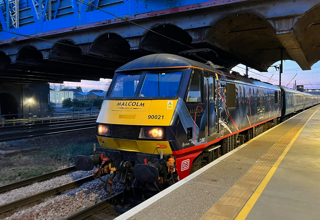
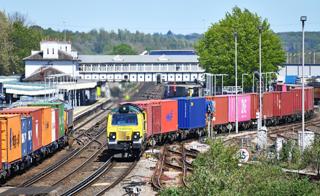
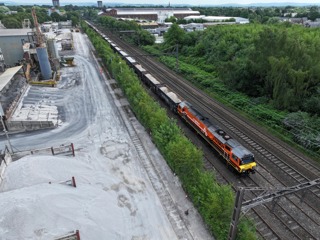
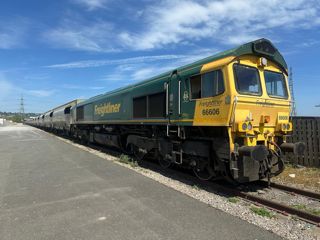
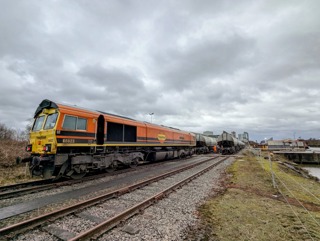










Login to comment
Comments
No comments have been made yet.